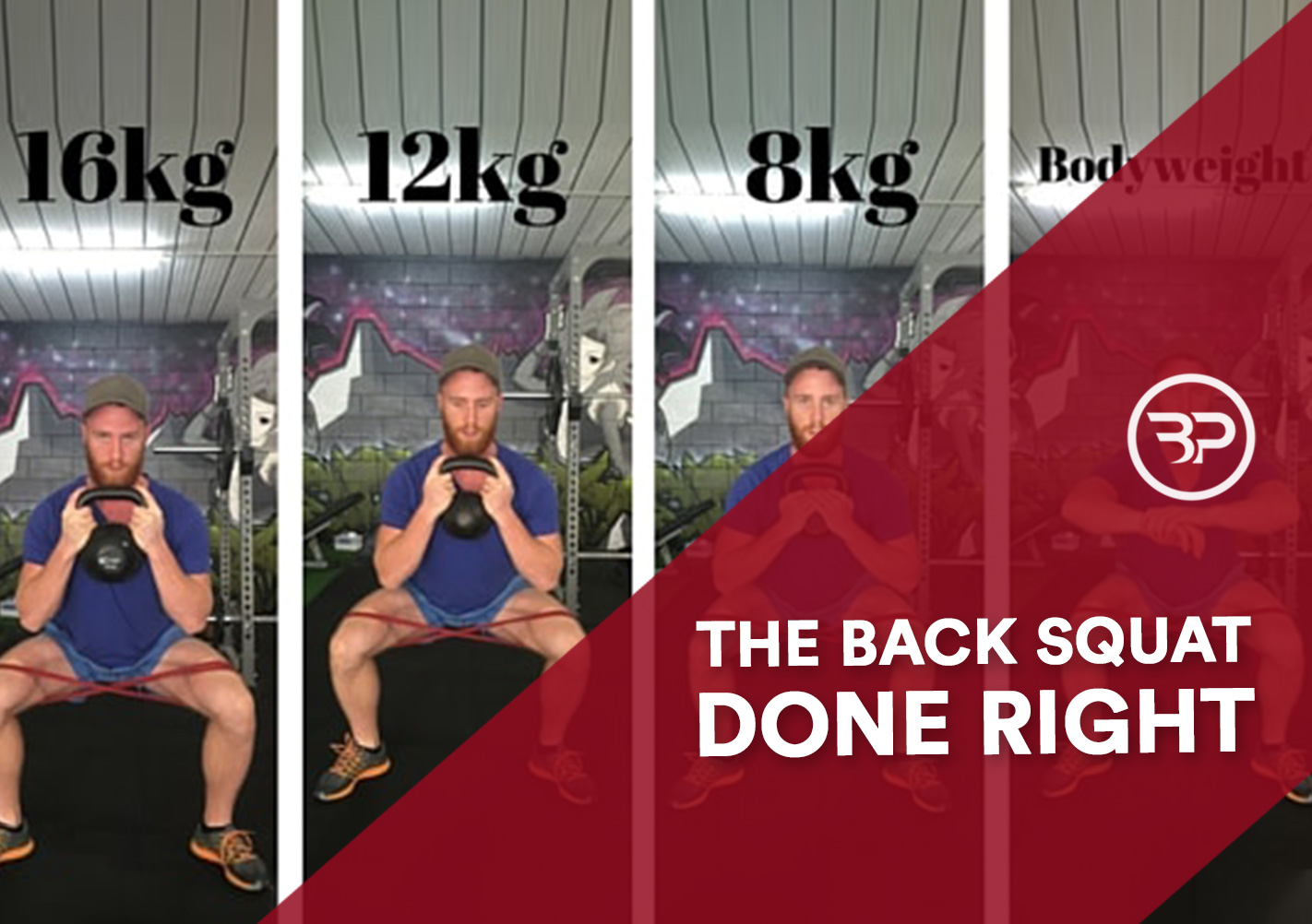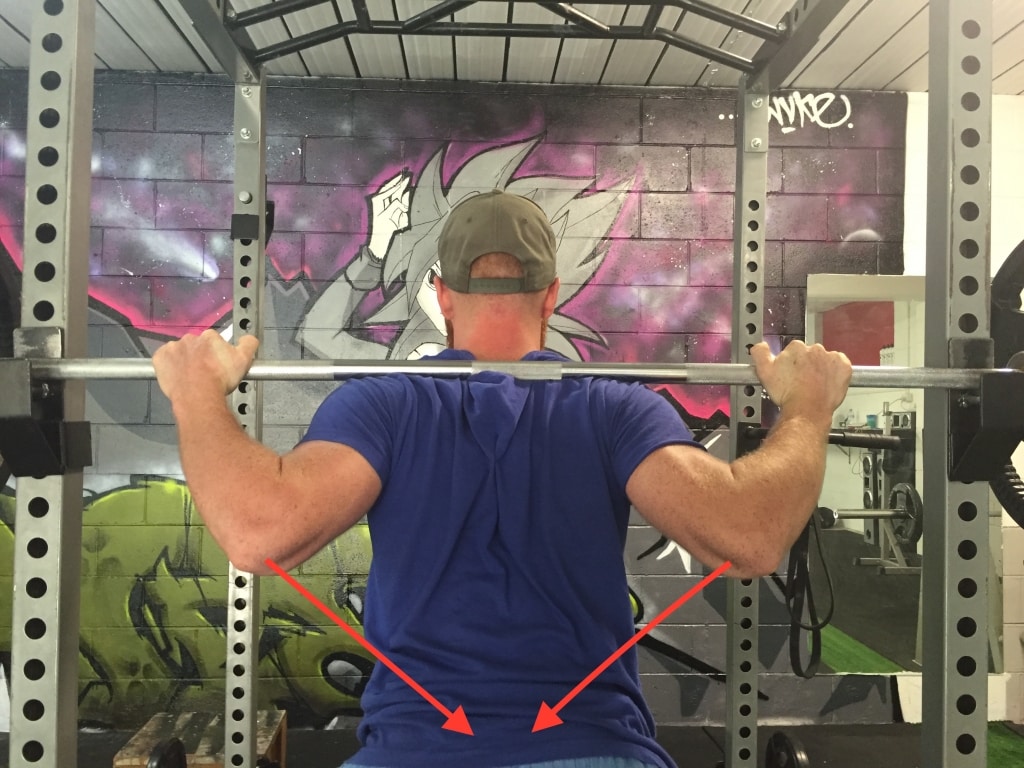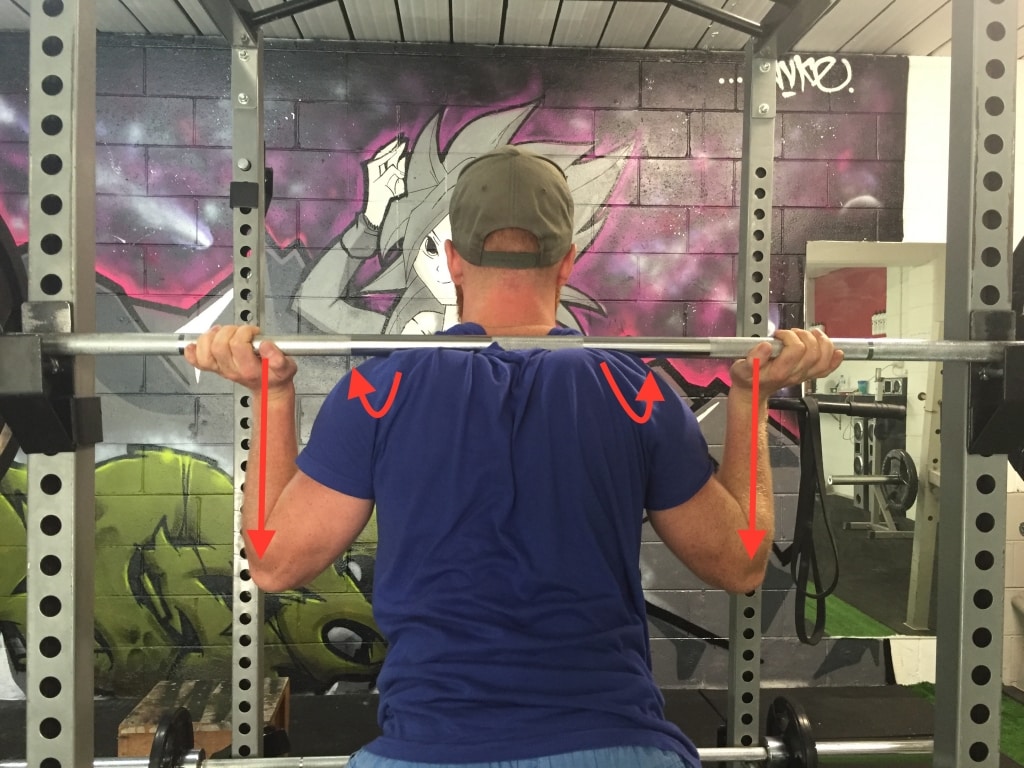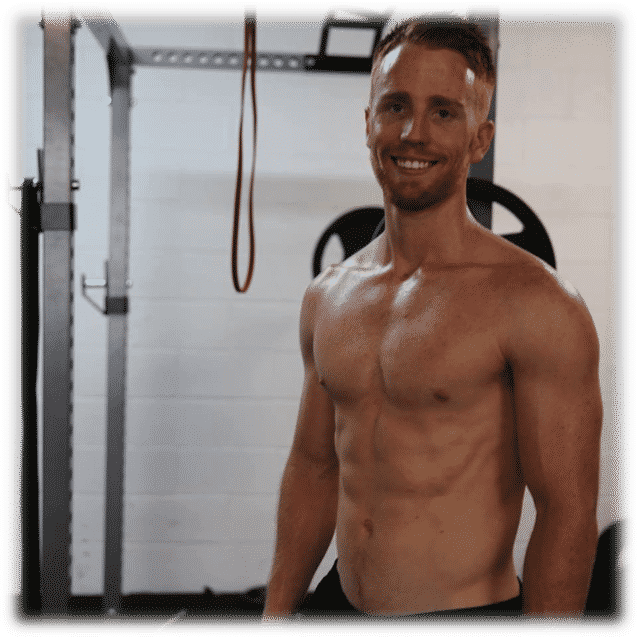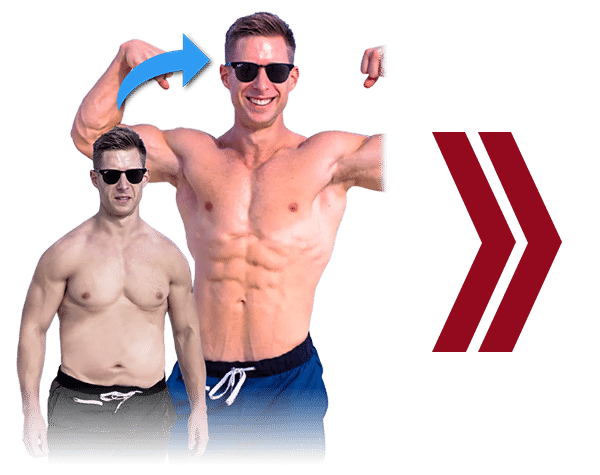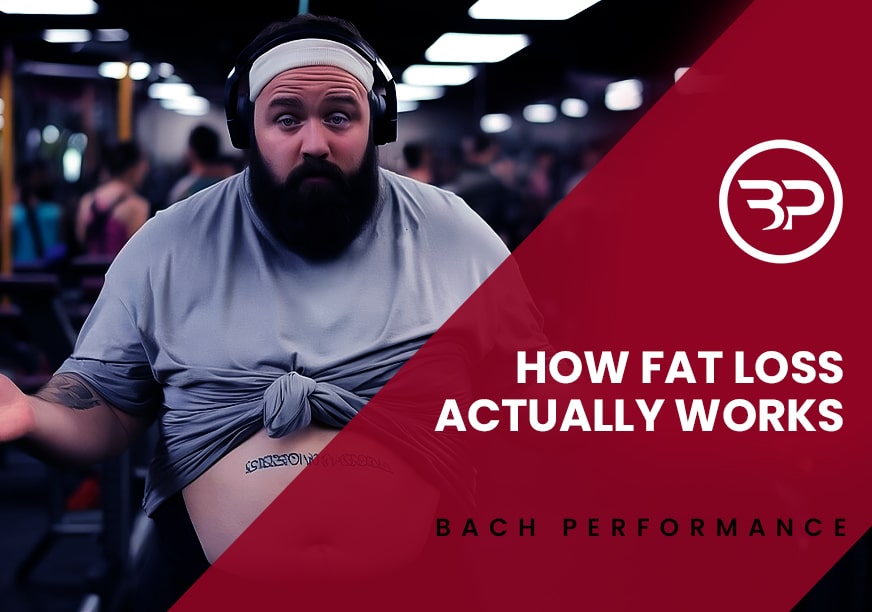The Back Squat Done Right
August 4, 2016
Despite being a popular exercise, most folks and jacking up their back squat. Tsk. Tsk. Unless staying weak and opening the door for injury sound good, you need to optimize your squat pattern.
In this extended guest blog post, Kennet Waale digs into the back squat and covers…
*How breathing better and improving mobility is essential for safety.
* A Miley Cyrus reference. Because why not.
* What you can do to improve your squat
—–
There is more to a successful squat than throwing a bar across your shoulders and droppin’ low like Miley Cyrus.
And there is more to a successful squat than sitting up and down.
Several joints move at the same time, all of which require a lot of tension and synchrony. You need excellent control with your hips, knees, and ankles, to generate strength and move weight. Above all, you must avoid rounding your back…unless slipping a disk and spending hours in physical therapy is your idea of a good time.
Bottom line: The squat is not a simple task at all. In this article, I’m going to tackle the common myths and explain what you really need to do to improve.
The Big Myth: You Have To Squat Ass-To-Grass
No. This is wrong. You don’t have to squat ass-to-grass.
Okay, in an ideal world it would be great to see everyone squatting ass-to-grass. But let’s get real….and take into account real world differences. Your structure, injury history and current training are some of the factors that will determine the ideal squatting depth.
And I’ll go further. If you are a fitness enthusiast who is only looking to feel better, shed some body fat and get stronger, then the standard squat isn’t even a necessity in your program.
But if your goal is to compete in powerlifting or Olympic weightlifting, the squat is a staple exercise. Train it regularly to the depth required to pass and catch a lift.
How to explain the common notion that you have to squat with your buttocks touching the ground? Well, it has a lot to do with poor reasoning and misconceptions by fitness professionals who really ought to know better.
Do the same movements have to occur at the hips, knees, and ankles?
–Absolutely.
Does this mean that every squat should look the same?
–Hell No.
Can we achieve these movements without the standard squat?
-Yes.
The Danger Of Hyper Extension
Extension and flexion are normal and required movement patterns. But many people tend to hyperextend their lower back during squats, which compromises spinal health.
And it all starts with the set-up. Your upper back is naturally slightly rounded with your lower back being naturally arched. In order to create a solid base, we need to reverse these spinal positions ever so slightly.
This means that your joints, ligaments, and muscles will aid in the support and efficiency of the movement. Your upper back will maintain an ever so slightly extended position throughout the whole movement.
Focus on keeping your lower back in a nice and steady position throughout the movement from beginning to end.
Beyond The Sedentary Lifestyle
Getting your thoracic spine (upper back, newbs) and hips ready for squatting is essential. So is joint mobility. None of these is possible if you spend your working hours slaving behind a desk, and your relaxation hours partaking in #NetflixandChill.
So, this begs the question…how can we battle against the sedentary nature of our lives?
By improving your most basic human function, pooping breathing.
Optimizing your breathing patterns will:
- improve stability through your midsection
- allow for better thoracic mobility
- aid in hip and low back stability through co-contraction of other deeper stabilizers
These exercises are a great starting point for improving mobility and your breathing patterns:
Perform one set of five or six reps per exercise to optimize your breathing patterns for the squat.
Diaphragmatic Breathing With Lat Stretch: Concurrently feel an amazeballs stretch in your lat while improving your breathing function.
Quadruped Thoracic Rotations: To improve thoracic mobility
Tall Kneeling Rotations: To improve thoracic mobility.
Sumo Squat to Stand: Improve hip mobility.
Glute Bridges: Improve glute activation and hip extension, both of which protect your lower back from excessive hyperextension.
Squatting On The Ground
For some people, it’s best to learn to squat from the ground up with an exercise like the resisted rock-back. This exercise teaches you to hold a neutral spine position as you rock back towards your heels without the compressive stress of a massive barbell.
In a quadruped position, attach one or two bands around your shoulders. Breathe into your low back and maintain a nice and neutral spinal position, and rock back towards your heels. Do 2-3 sets of 5 repetitions before moving to the Goblet Squat.
The Goblet Squat
The Goblet Squat is a brilliant way to start squatting properly because the weights acts as a counter-balance to maintain a neutral spine, ergo, not keeping over and jacking up your back, and helping you sit into the squat safely.
As a rule of thumb, the majority of people find squatting more comfortable with slightly turned out feet. Ensure to push your big toes into the ground, stay heavy on your heels and let all your toes touch the ground.
Once you have mastered the positioning with your feet and learned how to generate lots of tension throughout the entire range of movement, we have to decrease the weight of the kettlebell and add a band around your knees.
We do this for two reasons:
- Your abs will act as co-contractors instead of the weights of the kettlebell
* Aa band forces more external rotation and abduction in your hips aiding in more stability and strength. Basically, you get stronger to lift more weight and prevent injury.
 Figure 1: Decrease the weight in increments, until you are able to do it with just bodyweight
Figure 1: Decrease the weight in increments, until you are able to do it with just bodyweight
PUTTING IT ALTOGETHER with These Five Squat Cues
Woot, Woot!
Amongst the gazillion cues available, these are the cats meow for my clients.
1.“Elbows Together” or “Pull The Bar Through You”
- Use instead of: “elbows under the bar”
Figure 2: Pull the bar through you and point your elbows towards your butt.
Squatting with your elbows “under the bar”, as is often taught, will leave your shoulders slightly more internally rotated. This will lead to a loss of tension in your upper back.
Figure 3: Don’t squat with your elbows under the bar. You will lose tension in your upper back.
Heck, even if you got your shoulders underneath the bar without losing tension, it wouldn’t help that much. Why? Because your lats have to be on fire to maintain a strong position. When you imagine pulling your elbows together or pulling the bar through you, you will create a strong retracted position with your lats being highly engaged for more strength and a stable spine. More gain and less pain? I’m down.
One more cure I tend to find work very well to further re-emphasize lat activation is ‘to squeeze your arm pits.’
2.“Breathe Into Your Low Back” or “Create A Balloon Belly”
Use instead of: “ fill your belly with air” or “breathe into your tummy.”
As we mentioned above, a well-working diaphragm (breathing) will ensure a really stable base through your midsection. When we increase the intra-abdominal pressure, it will reinforce our upper back and hip strength throughout the movement.
Breathing into your chest and belly could be okay. But we need to remember that there is a front, back and side portion of the body. When you “breathe into your low back” or ‘create a balloon belly” you will reinforce the strong expansion of your midsection in all these directions to protect you from injury.
3.“Push The Ground Away From You”
Use Instead Of: “Push Your knees Out” or “Spread The floor”
Figure 4: Point your toes out and push the ground away from you.
Squatting without proper foot placement and tension is a god-awful task. The majority of people who squat tend to push their knees out, leaving their feet in a very vulnerable position by lifting their big toes and inside of their feet off the ground.
When you use the cue “push the ground away from you” you’ll automatically assume a position where your big toes, little toes and heels are firmly pressed into the ground. Pushing the ground away from you forcefully will allow for strong glute activation and safe knee position. Together, this creates a stronger and safer squat.
4.“Traps Up First” or “Touch Your Head To The Ceiling”
Use Instead Of: “Chest up First “
Figure 5: Think of your trapz and head touching the ceiling when you come out of the bottom of the squat.
Squatting with your “chest up first” can tend to cause more than wanted extension in the lower back. When you start moving up in the squat, we change from a lowering to a rising phase. These phases of the squat differ highly in muscle activation. Other than poor glute strength making it hard to get out of the bottom of the squat, the ‘chest up first’ cue will further reinforce an already weakened position.
If you think ‘Trapz up first” or “Touch your head to the ceiling” your back and be put in a lot stronger position.
This leads me to the last, and probably most important cue…
5.“Own The Position”
To squat safely and effectively you must know and own every part of your squat. Know what it feels to sit in the bottom position. Know what it feels like when you break at your knees instead of both hips and knees. Know what it feels like when you are in an efficient versus inefficient position.
If they remember the other cues and lose focus ever so slightly, “own the position” is a good catch-phrase to bring lifters back on track and focus on the quality of each rep, rather than the weight on the bar.
What Now?
Drop your ego.
Scale things back.
Know that you are where you are because of something that didn’t go to plan in the past.
Bottom line: You have to prepare and you need to practice. The squat can be one of the best exercises in the gym, but you need to own it. That’s how you get better.
About Kennet Waale
Kennet Waale is a coach for Movestrong Training Systems, and the co-founder of Thy Vertex; a multifaceted health facility in Brisbane, Australia.
He earned his Bachelor’s degree in human movement studies as an exercise scientist at The University of Queensland. During his almost eight years of coaching, he has gone to work with athletes up to the Commonwealth and Olympic levels as well as every day folks wanting to look better naked.


